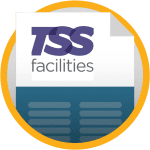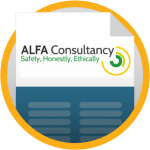VideoTile Extended Library
The following suites and courses can be added to your LMS on request at no extra cost and are available in the following languages:
-
Spanish
-
Chinese
-
Dutch
-
French
-
German
-
Japanese
-
Portuguese
Training Topics
- Personal Protective Equipment (PPE)
- Fire Extinguishers
- Respirators
- Hearing Protection
- Chemical Hazard Communication
- Workplace Violence and Security
- Powered Industrial Trucks (PIT)
- Lockout/Tagout and Machine Guarding
- Confined Spaces
- First Aid and Bloodborne Pathogens
- Fire Prevention, Flammable and Combustible Materials
- Process Safety Management (PSM)
- Cleaning Up Hazardous Waste or Chemical Spills
- Telecommunications Industry
- Toxic or Hazardous Substances
- Electrical Safety
- Environmental
- Hazardous Materials Chemical Packaging and Shipping
- Supervising Commercial Drivers
- Welding, Cutting and Brazing
- Fall Protection
- Explosives and Blasting Agents
- Hand and Powers Tools
- Supervisors and Managers
- Crane Operation
- Driver Safety
- Entry-Level Commercial Driver
- Lithium-Ion Batteries
Popular Suites/Programs
Construction Industry Safety Program
- 25 safety courses that construction audiences consider the most critical for working safely and avoiding damage, injuries and fatalities
General Industry Safety Program
- 25 safety courses that are critical to our general industry audience because they teach participants how to work safely and avoid damage, injuries and fatalities
HazMat Transportation Suite
- 10 courses that train drivers on hazardous material cargo tanks, loading and unloading, product handling, securement, marking, labeling, placarding, reporting, shipping papers, recordkeeping, security and emergency response.
Large Lithium-Ion Battery Suite
- 6 courses to cover safe handling, transportation, storage, disposal and incident preparedness and response training.
Top Industries
- Construction
- Transportation and Warehousing
- Manufacturing
- Property Management
- Utilities (Electric, water, gas, telecommunications)
Construction
Why: One of the most hazardous industries due to falls, electrocution, heavy machinery, and structural hazards.
Training Areas:
- Fall protection (OSHA Focus Four)
- Scaffolding and ladder safety
- PPE usage
- Trenching and excavation
- Equipment operation and lockout/tagout
Manufacturing
Why: High risk of machine-related injuries, chemical exposure, repetitive motion injuries, and noise hazards.
Common Training Areas:
- Machine guarding
- Lockout/tagout (LOTO)
- Hazard communication (HAZCOM)
- Ergonomics
- Forklift and industrial truck safety
Utilities (Electric, Water, Gas, Telecommunications)
Why: Utility workers often deal with high-voltage electricity, confined spaces, hazardous materials, and working at heights.
Common Training Areas:
- Electrical safety and arc flash
- Confined space entry
- Fall protection
- Lockout/tagout
- Emergency response and disaster preparedness
Transportation and Warehousing
Why: Includes vehicle operation, heavy lifting, hazardous materials, and loading dock safety — all major safety concerns
Common Training Areas:
- Defensive driving and DOT compliance
- Material handling and ergonomics
- Forklift operation
- Hazardous materials (HAZMAT) training
Property Management
Why: Property managers and maintenance staff face daily safety risks related to building upkeep, electrical systems, pest control chemicals, tenant interactions, and emergency situations like fires or floods.
Common Training Areas:
- Slip, trip, and fall prevention
- Ladder and electrical safety
- Mold, asbestos, and chemical hazard awareness
- Fire prevention and emergency evacuation procedures
- Workplace violence and conflict de-escalation
- Proper lifting and ergonomics for maintenance tasks
Library Contents
Construction Essentials
| Asbestos Hazards: Avoiding Exposure | Mobile Elevated Work Platforms |
| Asbestos Hazards: Characteristics and Health Effects | OSHA Inspections for Construction and MultiEmployer Worksites (US) |
| Asbestos Hazards: Products and Types | Personal Protective Equipment (PPE) Overview for Construction: Protective Characteristics |
| Asbestos Hazards: Release Response | Fire Extinguisher Safety for Construction, Parts 1-2 (US) |
| Asbestos Hazards: Signs, Areas and Monitoring | First Aid Awareness |
| Asbestos Hazards: Workers in the United States (US) | Flammable and Combustible Liquids |
| Back Injury Awareness | Hand Tool Safety for Construction |
| Basic Rigging Principles, Parts 1-3 (IACET CEU=0.1) | Hazard Communication for Construction: How to Use Labels and Safety Data Sheets (US) |
| Blocking and Cribbing | Hazard Communication for Construction: Written Program (US) |
| Bloodborne Pathogens Awareness | Health Hazards in Construction: Introduction |
| Cold Stress | Health Hazards in Construction: Asbestos Awareness |
| Compressed Gas Cylinder Safety |
Health Hazards in Construction: Crystalline Silica Awareness |
| Concrete and Masonry Awareness | Health Hazards in Construction: Lead Awareness |
| Confined Spaces, Parts 1-2 (IACET CEU=0.1) | Health Hazards in Construction: Special Concerns |
| Confined Spaces: Construction Requirements | Hearing Conservation |
| Construction Safety Orientation | Heat Stress |
| Crane Operator Safety | Hot Work for Construction |
| Crane Signaling Awareness | Job Hazard Analysis (JHA) |
| Crystalline Silica Awareness | Personal Protective Equipment (PPE) Overview for Construction: Using and Maintaining PPE |
| Defensive Driving – Small Vehicles | Power Tool Safety for Construction |
| Dust Mask – Voluntary Use Guidelines (US) | Powered Industrial Trucks, Parts 1-7 (IACET CEU=0.1) |
| Electrical Arc Flash Awareness | Pre-Job Briefings |
| Electrical Safety for Construction: Cord and Plug Connected Equipment (US) | Preventing Cuts and Puncture Wounds |
| Electrical Safety for Construction: Power Lines and Lockout/Tagout (LOTO) (US) | Rough Terrain Forklift Safety, Parts 1-2 |
| Excavation and Trenching Safety (US) | Scaffold Safety Essentials |
| Fall Protection: Rescues | Slips, Trips and Falls for Construction |
| Ladder Safety for Construction: Selection and Inspection | Stormwater and Erosion Control for Construction |
| Ladder Safety for Construction: Setup and Use | Struck-By, Caught-Between – Staying Out of the Line of Fire for Construction |
| Lone Worker: Concerns | Walking/Working Surfaces |
| Lone Worker: Risk Assessment | Work Zone Safety, Parts 1-2 |
| Low-Speed and Utility Vehicle Safety | Workplace Violence Prevention Awareness |
| Materials Handling Practices for Construction (US) |
Driving Safety Course
| Defensive Driving – Small Vehicles (PS5-00264) |
|
| Driving Safety: Changing Lanes (US) (PS5-103071) |
|
| Driving Safety: Speeding and Stopping Distance (US) (PS5-103073) |
|
| Driving Safety: Tailgating (US) (PS5-103075) |
|
| Distracted Driving (PS5-00177) |
|
EHS Powered industrial vehicles
Powered Industrial Trucks, Parts 1-7.
| 1. Classes and Types |
• Recall definitions of powered industrial trucks • Classify types of powered industrial trucks • Recall how power sources affect which powered industrial truck to choose for different jobs • Use data plates and markings to find information about a truck, including its weight and lifting capacity |
| 2. Pre-Operation Inspection |
• Know how to ensure that an operator is ready to operate a powered industrial truck • Know how to evaluate five key pre-operation inspection points |
| 3. Operational Inspection and Maintenance |
• Recall what is included in an operational inspection • Know what happens during truck maintenance and inspection follow-up |
| 4. Fueling and Charging | • Recall general safety procedures to take when refueling or changing and charging batteries |
| 5. Preventing Incidents |
• Know about the factors that influence the stability and safety of powered industrial trucks • Know what operators should do if their powered industrial truck tips over |
| 6. Picking Up and Placing Loads | • Recall how to pick up, handle and place loads |
| 7. Loading Dock Operations | • Recall safe practices for operating powered industrial trucks at loading dock areas |
Equipment-Specific Modules
| Forklift Awareness |
• State the most common causes of forklift injuries and fatalities • Identify key elements for safe operation of a forklift, including stability and load handling • Recognize the most important considerations for stopping a lift and/or ending a shift |
| Pallet Truck Safety |
• Recognize the types of pallet trucks and their special considerations • Know how to prepare to safely operate pallet trucks • Recall general safe operation practices for pallet trucks • Know how to safely use pallet trucks at docks and on ramps or slopes |
| Order Picker Safety |
• Recognize the features, common names and uses of order pickers • Know how to ensure that order picker operators, areas and equipment are ready for safe use • Know how to prevent accidents such as falling, crushing and tipping • Recall how to safely park order pickers |
|
Tugger and Tow Tractor Safety Part 1: Readiness Part 2: Operation |
• Distinguish tuggers and tow tractors from other types of powered industrial trucks • Know how to prepare tugger and tow tractor operators, environments and equipment for safe operation • Recall safe practices for operating tuggers and tow tractors while riding and walking • Know how to safely stop, park and store tuggers and tow tractors |
|
Rough Terrain Forklift Safety Part 1: Readiness Part 2: Operation |
• Recognize rough terrain forklifts and their parts • Ensure that an operator is ready to operate a rough terrain forklift • Evaluate and prepare an area for rough terrain forklift operation • Know what is included in visual and operational inspections of rough terrain forklifts • Use a load capacity chart • Know how and when to start rough terrain forklifts • Recall safe practices to avoid collisions when operating rough terrain forklifts • Recall safe practices to prevent tip-overs when operating rough terrain forklifts • Recall safe practices for performing lifts with rough terrain forklifts • Know how to safely park rough terrain forklifts |
| Low-Speed and Utility Vehicle Safety |
• Recognize hazards associated with low-speed and utility vehicles • Recall ways to stay safe when operating or riding in low-speed and utility vehicles |
General Industry
| Active Shooter: Preparation and Response Suite (IACET CEU=0.1) | Lockout/Tagout (LOTO) Programs and Procedures |
| Bench Grinder Safety | Lone Worker, Parts 1-2 |
| Bloodborne Pathogens (BBP) | Machine Guarding, Parts 1-2 |
| Combustible Dust | Materials Handling and Storage |
| Compressed Air Safety Awareness | Mobile Elevated Work Platforms |
| Compressed Gas Cylinder Safety | Office Ergonomics Essentials |
| Confined Space Hazards | Office Safety |
| Confined Spaces: General Industry Requirements | Order Picker Safety |
| Conveyor Safety Awareness | Overhead and Gantry Crane Safety |
| Culture of Early Reporting | Pallet Truck Safety |
| Egress and Emergency Action Plans | Personal Factors in Safety |
| Electrical Arc Flash Awareness | Personal Protective Equipment (PPE) Overview |
| Environmental Responsibility, Parts 1-3 (US) (IACET CEU=0.1) | Powered Industrial Trucks, Parts 1-7 (IACET CEU=0.1) |
| Fire Prevention | Pre-Job Briefings |
| First Aid Awareness | Preventing Back Injury |
| Flammable and Combustible Liquids | Preventing Slips, Trips and Falls |
| Giving and Receiving Feedback | Recognizing Electrical Hazards Awareness |
| Hand and Power Tool Safety | Reporting (Data Entry) |
| Hazard Communication (US) | Respiratory Protection |
| Hazard Communication Awareness (US) | Safety Orientation |
| Hearing Conservation | Tasks and Corrective Actions |
| Heat Stress | Trending and Analysis |
| Hot Work | Walking/Working Surfaces |
| Housekeeping on the Job | Warehouse Safety |
| Hydraulic Safety | Welding, Cutting and Brazing, Parts 1-3 (IACET CEU=0.1) |
| Incident Investigation | What If? Mentality |
| Industrial Ergonomics |
Why Incident Management Matters (WIMM) Introduction |
| Inspections and Observations | Workplace Violence Prevention |
| Lab Safety |
Large Lithium Batteries
| Large Lithium-Ion Battery Systems Part 1 of 6: Introduction (PS5-103856) |
● Define terms that apply to lithium-ion batteries ● Differentiate between the types of lithium batteries ● Recognize how lithium-ion batteries work ● Recall how lithium-ion batteries can fail due to internal defects and abuse in the field ● Remember why it’s important to purchase third-party certified batteries |
| Large Lithium-Ion Battery Systems Part 2 of 6: Safe Handling (PS5-103857) |
● Recall the general guidelines for safe handling of lithiumion batteries ● Identify signs of battery damage ● Identify possible causes of battery damage ● Recognize how to properly handle damaged batteries |
| Large Lithium-Ion Battery Systems Part 3 of 6: Safe Transportation (US) (PS5-103895) |
● Recognize potential consequences of improperly transporting lithium-ion batteries ● Recall the correct hazard class for lithium-ion batteries ● Identify the shipper’s responsibilities when transporting batteries ● Recognize general ground, air and water transportation guidelines ● List applicable regulations for transporting lithium-ion batteries ● Identify general battery-related first aid measures |
Small Lithium Batteries
| Introduction to Lithium-Ion Batteries (STL-100100) |
• Define lithium-ion battery • Identify lithium-ion batteries • Describe the importance of purchasing 3rd-party-certified batteries • List possible faults caused by improper use and abuse in the field |
| Safe Handling of Lithium-Ion Batteries (STL-100101) |
• List the general guidelines for safe handling of lithium batteries • List possible causes of damage in lithium-ion batteries Describe signs of damage in lithium-ion batteries • List the steps for the safe handling of damaged lithium batteries |
| Safe Transportation of Lithium-Ion Batteries (STL100102) |
• Describe potential consequences of improperly transporting lithium-ion batteries • List the correct hazard class for lithium-ion batteries • List the shipper’s responsibilities in transporting batteries • List applicable regulations for transporting lithium-ion batteries • List general ground transportation guidelines |
|
Safe Storage of Lithium-Ion Batteries (STL-100103)
|
• List the steps to prepare lithium-ion batteries for storage • Describe appropriate storage location for lithium-ion batteries • Describe the appropriate storage conditions for lithium-ion batteries • List important considerations for storage |
|
Safe Disposal of Lithium-Ion Batteries (STL-100104)
|
• List applicable regulations for safe disposal of lithium-ion batteries in the United States • List the steps to prepare batteries for disposal |
| Lithium-Ion Battery Incident Preparedness and Response Planning (STL-100105) |
• List the possible lithium-ion battery incidents • List the steps to control a lithium-ion battery fire • List the steps for electrolyte spill cleanup • List the steps for general battery-related first aid |
Restaurant Positioning
| Active Shooter: Preparation and Response Suite (BDL-12086) (IACET CEU=0.1) |
Active Shooter: Victims (PS5-100405) Active Shooter: Run, Hide, Fight (PS5-100403) Active Shooter: Prevention and Preparation (PS5-100087) Active Shooter: Law Enforcement (PS5-100404) |
| This program provides information about worker rights, employer responsibilities, and how to identify, abate, avoid and prevent job-related hazards. Although many essential safety topics are covered, additional site-specific information and hands-on demonstrations of skills are needed for worker safety and to fulfill training requirements found in OSHA standards. |
|
| First Aid Suite (US) w/11 courses (BDL-30084) (IACET CEU=0.2) |
First Aid – Module 01 – Introduction (US) (PS5-20000) First Aid – Module 02 – Finding Out What Is Wrong (US) (PS5-20001) First Aid – Module 03 – Basic Life Support (US) (PS520002) First Aid – Module 04 – Bleeding and Wound Care (US) (PS5-20003) First Aid – Module 05 – Shock and Anaphylaxis Care (US) (PS5-20004) First Aid – Module 06 – Burns and Electrical Shock (US) (PS5-20005) First Aid – Module 07 – Serious Injuries (US) (PS5-20006) First Aid – Module 08 – Bone, Joint and Muscle Injuries (US) (PS5-20007) First Aid – Module 09 – Sudden Illness (US) (PS5-20008) First Aid – Module 10 – Poisoning (US) (PS5-20009) First Aid – Module 11 – Cold and Heat Emergencies (US) (PS5-20010) |
Advanced Safety Orientation
| OSHA 10: General Industry Outreach Training Course* | Advanced Safety Orientation for General Industry |
| OSHA 10: General Industry Outreach Training (Spanish)* | Advanced Safety Orientation for General Industry (Spanish) |
| OSHA 10: General Industry Outreach Training Course (High-Tech/Semiconductor)* | No ASO equivalent |
| OSHA 30: General Industry Outreach Training – Coming Soon | Advanced Safety Orientation for Managers and Supervisors in General Industry |
| OSHA 10: Construction Industry Outreach Training Course* | Advanced Safety Orientation for Construction Industry |
| OSHA 10: Construction Industry Outreach Training Course (Spanish)* | Advanced Safety Orientation for Construction (Spanish) – Coming Soon |
| OSHA 30: Construction Industry Outreach Training* | Advanced Safety Orientation for Managers and Supervisors in Construction |
| OSHA 30: Construction Industry Outreach Training (Spanish)* | Advanced Safety Orientation for Managers and Supervisors in Construction (Spanish) – Coming Soon |
VideoTile obtains appropriate regulatory approvals and accreditations for all its video-based online training courses to US federal law standards

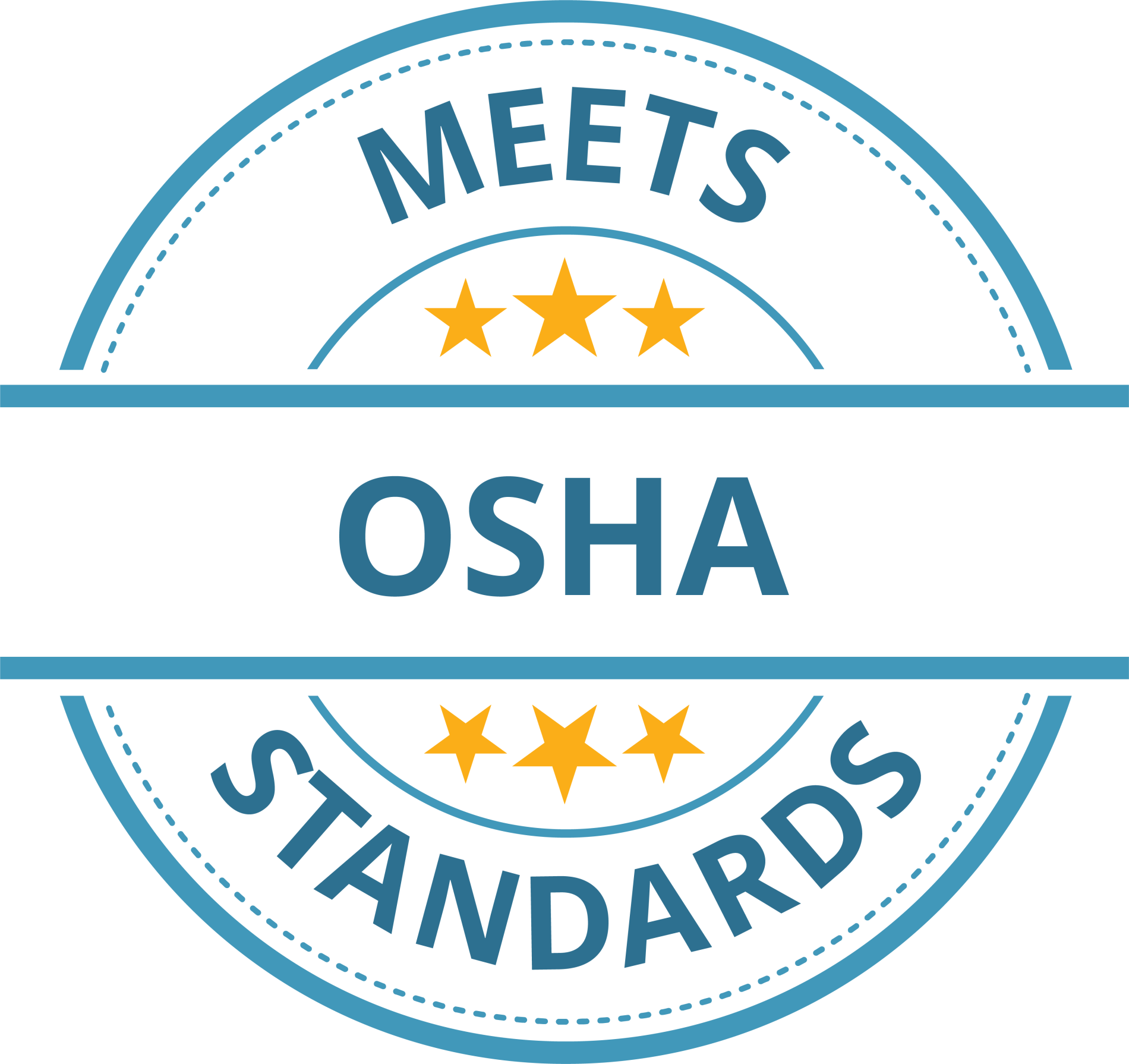

Distributor case studies
SME Advisor
HR Consultants
Embark Learning
Health and Social Care Sector
TSS Facilities
Facilities Management
Westminster Compliance
Health and Safety Consultants
Alfa
Training Provider
Darcy
Recruitment
Some of Our Users















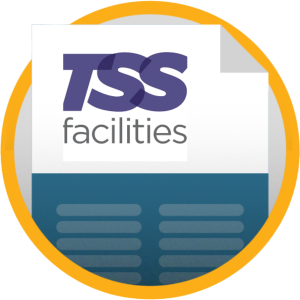

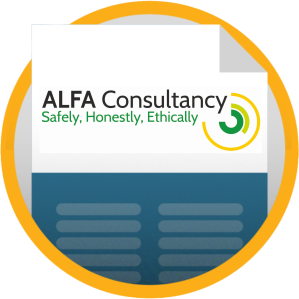


 Embark Learning Case Study
Embark Learning Case Study